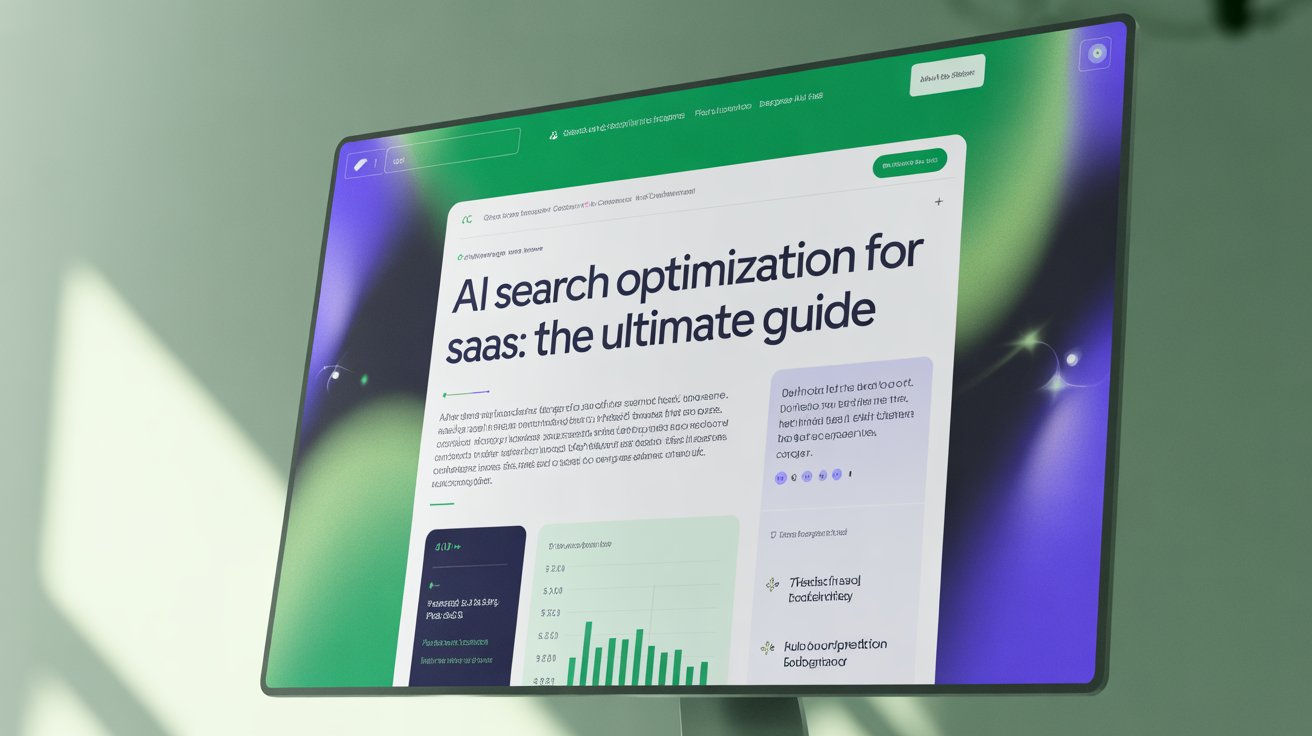AI Search Optimization for SaaS: The Ultimate Guide
Learn how SaaS companies can master AI Search Optimization (AEO) to appear in Google AI Overviews, Bing Copilot, and ChatGPT answers. Explore content structuring, schema, E-E-A-T, and authority strategies to win citations and visibility in the generative search era.

The search landscape for SaaS companies is changing faster than ever. With the rise of generative AI systems like Google AI Overviews, Bing Copilot, and ChatGPT, users are no longer clicking links—they’re reading AI-generated answers synthesized from multiple trusted sources. For SaaS marketers, this means success now depends on being the source that AI systems choose to quote.
AI Search Optimization, also known as Answer Engine Optimization (AEO), is the process of structuring, tagging, and writing content so it can be easily parsed and cited by AI search engines. It’s how your company ensures that product pages, tutorials, and thought leadership become part of the conversational answers users now rely on.
The Generative Search Shift
Traditional SEO is still essential for driving traffic, but generative search introduces a new visibility layer: being cited inside AI answers. Instead of ten blue links, users now see summarized insights from the top sources that AI models trust. This shift is reshaping how SaaS brands measure visibility, authority, and content performance.
Studies from SEMrush and SparkToro show that zero-click searches are increasing, with up to 35% of users never leaving the results page. Yet brands cited within AI responses gain long-term credibility and a measurable rise in branded searches.
Building Trust and Authority for LLMs
Generative systems evaluate content differently than traditional search algorithms. Large language models analyze text for accuracy, attribution, and topical depth. They prioritize sources with visible authorship, transparent data, and clearly maintained freshness.
To build credibility, SaaS marketers should include author bios with credentials, link to case studies or peer-reviewed data, and provide unique insights unavailable elsewhere. Even small details—such as adding “Last Updated” timestamps and referencing recent statistics—help AI confidence scoring systems determine that your content is relevant and reliable.
Beyond on-page factors, establishing presence on platforms like LinkedIn, Reddit (tactical guide to Reddit SEO without getting banned), and industry forums can amplify perceived expertise. AI models frequently cross-reference brand and author mentions across external sites, reinforcing the trustworthiness of your main domain.
Structuring Content for AI Extraction
Unlike human readers, AI systems parse web pages into structured segments. This means your SaaS content must be modular and explicit. Each H2 or H3 heading should be phrased as a natural question, followed by a concise, self-contained answer. This format aligns perfectly with how answer engines extract information for conversational responses.
Complement your structure with structured data markup from Schema.org. Essential schema types for SaaS include FAQPage for question-based content, HowTo for implementation guides, and SoftwareApplication for product and feature pages. These schema types tell AI systems exactly what your page represents, helping them retrieve accurate snippets and descriptions.
For practical validation, use Google’s Rich Results Test or Schema Validator to confirm your markup is properly implemented. This ensures that answer engines interpret your content accurately.
From Blog Posts to Knowledge Graphs
AI models prefer websites that demonstrate comprehensive topical authority. For SaaS companies, this means designing your site as a structured knowledge base—not a collection of isolated articles. The pillar-cluster model, where a central page connects to multiple related subtopics, mirrors the way AI systems build their own internal knowledge graphs.
A SaaS firm offering analytics software, for example, might have a pillar page on “Data Intelligence Platforms” supported by clusters on “Integrations,” “Visualization Tools,” and “Compliance Analytics.” These internal connections help generative systems identify relationships between entities, boosting your visibility across AI answers related to analytics and business intelligence.
You can learn more about how we structure this kind of knowledge architecture for software companies at Agenxus Technology Industry Services.
Measuring Success in the AI Era
Conventional SEO metrics—rankings, impressions, and clicks—only show part of the story. In AI Search Optimization, you should track how often your domain is cited or referenced in AI-generated responses. This can be done manually by testing queries across platforms like Perplexity or via emerging AEO analytics tools.
Other key metrics include snippet ownership rate, factual accuracy of citations, and branded query growth following AI exposure. When your information consistently appears in AI responses, even if the user never clicks, it establishes long-term brand authority that compounds over time.
Conclusion
The age of generative search is not a threat—it’s an opportunity. For SaaS marketers who adapt, AI Search Optimization becomes a gateway to greater visibility, stronger authority, and direct influence on how users learn about your products. By blending structured content, rich schema, and authoritative sources, your brand can become a preferred reference in the AI-driven web.
To see how your company can integrate these strategies, explore Agenxus AI Search Optimization Services for an end-to-end implementation framework that positions your SaaS brand for long-term generative visibility.
Sources & Further Reading
Frequently Asked Questions
What is AI Search Optimization for SaaS?▼
How is AEO different from SEO?▼
Which schema types matter most for SaaS?▼
Does AI Search Optimization impact conversions?▼
Where can I learn more?▼
Ready to Get Found & Wow Your Customers?
From AI-powered search dominance to voice agents, chatbots, video assistants, and intelligent process automation—we build systems that get you noticed and keep customers engaged.
